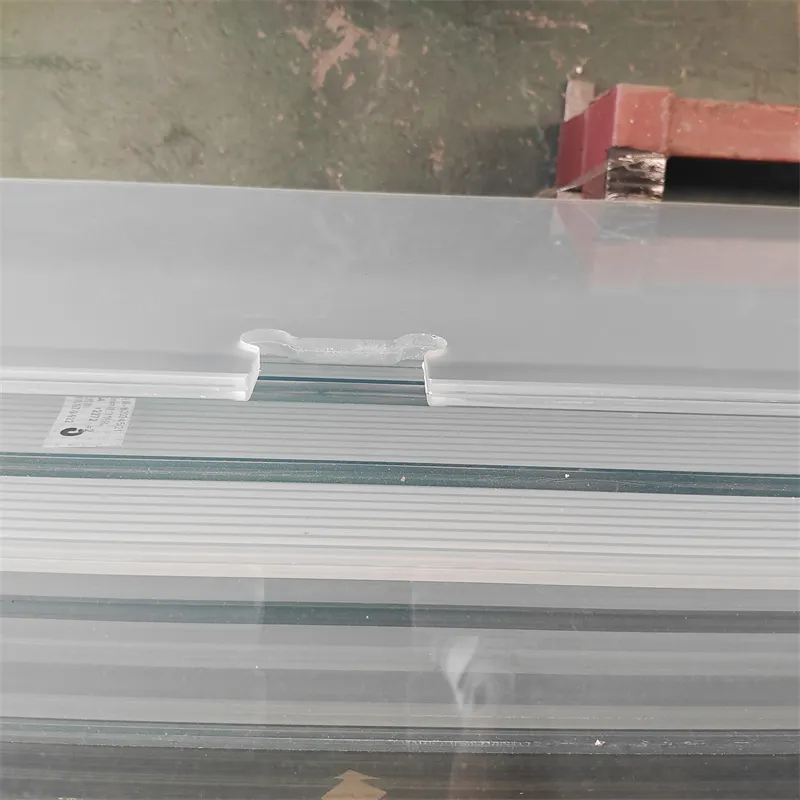Dec . 15, 2024 14:42 Back to list
Exploring the Benefits and Uses of Green Float Glass in Modern Architecture
Green Float Glass Characteristics, Uses, and Environmental Impact
Green float glass, a widely utilized material in the construction and automotive industries, is notable for its distinctive greenish hue. This coloration primarily results from the iron oxide content in the raw materials used during its production. As a critical component in modern architecture, packaging, and various consumer products, green float glass offers both aesthetic appeal and functional advantages. This article explores the characteristics, uses, and environmental impact of green float glass.
Characteristics of Green Float Glass
Green float glass is produced through the float process, where molten glass is poured onto a bed of molten tin. This method allows for the production of flat, uniform sheets of glass with optical clarity and smooth surfaces. The resulting glass not only exhibits excellent transparency but also possesses inherent strength, making it suitable for various applications.
The green tint is subtle yet visually pleasing, which contributes to its popularity in architectural designs. It effectively filters ultraviolet (UV) light while allowing visible light to pass through, making it an excellent choice for windows and facades. Moreover, it offers thermal insulation properties, thus enhancing energy efficiency in buildings. The color can vary in intensity, often depending on the thickness of the glass and the specific manufacturing process.
Uses in Architecture and Design
One of the most common applications of green float glass is in the construction industry
. It is extensively used for windows, doors, and curtain walls, as well as in interior applications such as partitions and balustrades. The green hue complements many architectural styles, from modern to traditional, creating a harmonious look when paired with various materials like wood, steel, and concrete.In addition to its aesthetic appeal, green float glass is often treated with coatings that enhance its performance. Low-emissivity (low-E) coatings can be applied to reduce heat transfer, making buildings more energy-efficient. Such features are particularly beneficial in regions with extreme weather conditions, where energy costs can be significantly reduced.
green float glass

Applications in Furniture and Interior Design
Beyond architecture, green float glass is also used in furniture design. It serves as tabletops, shelves, and decorative elements within interiors, adding sophistication and style. The translucence and glare-free surface make it a preferred choice for modern furniture aesthetics. Additionally, when combined with materials like metal or wood, it creates an appealing contrast that highlights the beauty of each component.
Environmental Impact
As sustainability becomes a central concern across industries, the environmental impact of materials like float glass is under scrutiny. Green float glass is primarily made from abundant raw materials silica sand, soda ash, and limestone. The production process can generate significant energy consumption and emissions, particularly due to the high temperatures required in glass melting.
However, the recyclability of glass presents a significant advantage. Green float glass can be recycled indefinitely without losing quality, helping to reduce landfill waste and conserve natural resources. Many manufacturers are now implementing recycling programs, encouraging consumers and businesses to return used glass products for remanufacture. This closed-loop system minimizes the extraction of raw materials and lowers overall carbon emissions.
Conclusion
Green float glass stands as an exemplary material in modern construction and design, offering a blend of aesthetic beauty, durability, and environmental sustainability. Its versatile applications range from building facades and windows to furniture and decorative elements, making it a staple in both residential and commercial projects. As the focus on sustainability continues to grow, the recycling potential of green float glass reinforces its role as an eco-friendly choice, ensuring that it remains a preferred material for years to come. Embracing its use aligns with the broader goal of creating sustainable and energy-efficient environments, demonstrating that beauty and responsibility can go hand in hand in the world of modern design.
-
Safety and Style with Premium Laminated Glass Solutions
NewsJun.24,2025
-
Reinvents Security with Premium Wired Glass
NewsJun.24,2025
-
Premium Float Glass Line for Modern Architecture
NewsJun.24,2025
-
Low Emissivity Glass for Energy-Efficient Architecture
NewsJun.24,2025
-
High-Performance Insulated Glass Solutions for Modern Architecture
NewsJun.24,2025
-
Elevates Interior Style with Premium Silver Mirror
NewsJun.24,2025
Related PRODUCTS














